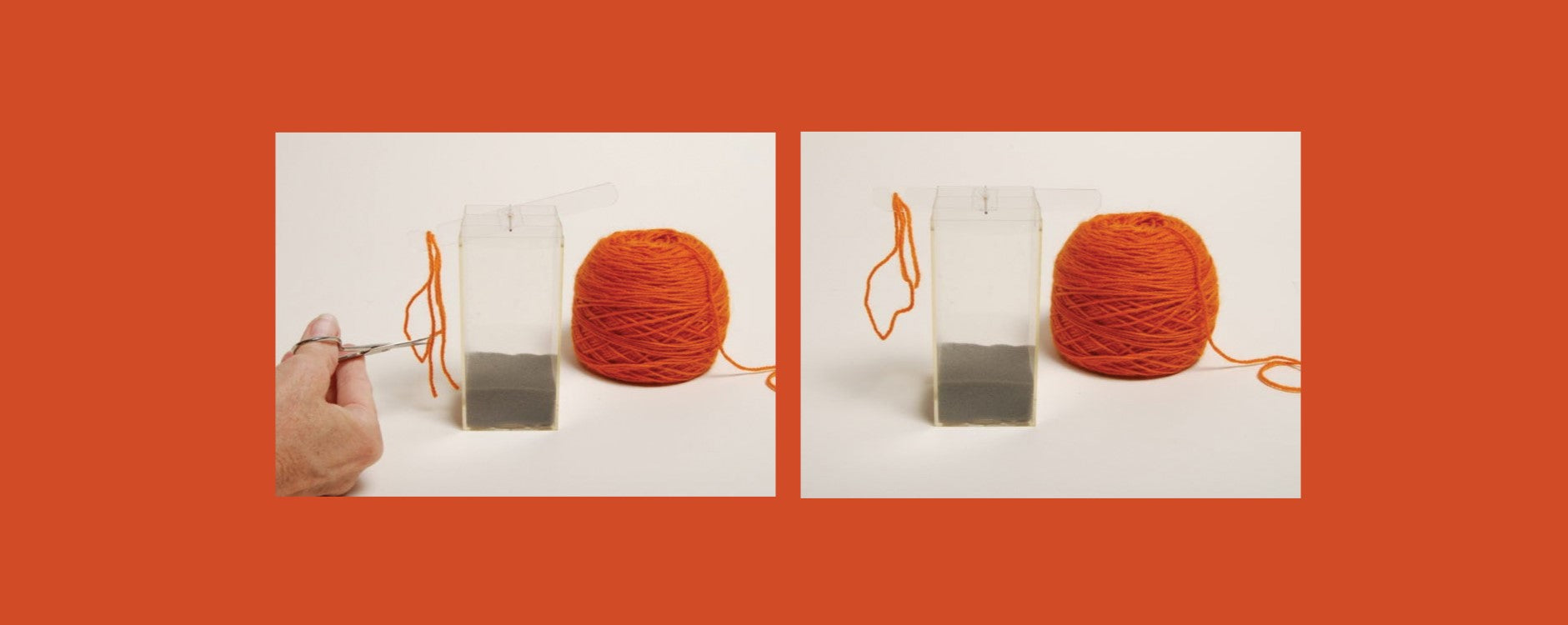Dear Tabby,
I have some yarn that I want to use for a project but I don’t know how much I have. I don’t want to run out. Please help.
–Confused
Dear Confused,
Using stash yarn for projects can be tricky if you don’t know how much yarn you have. You can always take your chances by eyeballing the yarn and guessing at the quantity. However, if you want to know for sure, you can use a McMorran Yan Balance (or the Yarn to Yards Balance available from Eugene Textile Center). This simple tool weighs a length of yarn and lets you calculate the yardage per pound of the yarn. You can then weigh your yarn on a scale (such as a cooking scale shown here) to determine how many yarns you have. Here’s how it works:
1. Balance the pin of the balance arm in the slots on the sides of the balance.
2. Place a length of yarn in the notch of the arm.

3. Cut the yarn little by little until the arm is balanced.

4. Measure this length of yarn on a ruler.

5. Weigh the ball of yarn on a scale to find out the total weight of the yarn you have.

6. To know if you have enough yarn, you’ll need to do a little math. In this example, our yarn measured 15" in length. We multiplied 15 by 100 to determine that there are 1,500 yards per pound of this yarn. We then weighed the ball of yarn and learned that it weighed 4 ounces. To find out how many yards were in these 4 ounces, we solved a simple equation:
1,500 yd = X yd
16 oz 4 oz
First multiply 4 x 1,500 = 6,000. Then divide this number by 16 to give the total amount of yarn: 6,000/16 = 375 yards.

